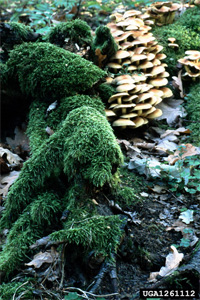|
In many ecosystems plants will be the most important influence on the carbon balance; however we must consider other organisms to completely understand the transfer of carbon to and from an ecosystem.
Soil microorganisms for example use dead plant material as an energy source, thus incorporating some of the carbon located in the material and returning some of it back to the atmosphere during respiration.
When considering the carbon balance of an ecosystem we must look at the biomass found with in the system.
Biomass is the dry mass of living organisms and dead organic mater contained in a specific area.
The net ecosystem production (NEP) can be calculated using the following equation (Barnes et al. 1998):
NEP = GPP – (Ra + Rh)
Where GPP equals the gross primary production, Ra is equal to the total plant respiration and Rh is equal to the
hetorotrophic respiration.
Gross primary production is the total amount of carbon fixed in an ecosystem during photosynthesis.

Gil Wojciech, Polish Forest Research Institute, www.forestryimages.org
|
